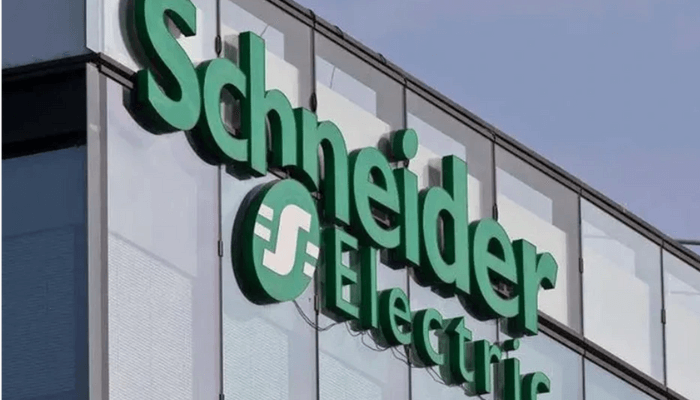Schneider’s AirSeT redefines grid sustainability, wins global award
Schneider Electric SE has won global recognition for its push to decarbonise electrical grids, after its breakthrough medium-voltage switchgear technology, AirSeT, was named Champion of the Scope 3 Downstream Solutions Challenge in the Sustainable Design category by the World Economic Forum’s (WEF) Alliance of CEO Climate Leaders.
The accolade underscores Schneider’s leadership in developing sustainable infrastructure technologies that cut greenhouse gas emissions deep in the power distribution value chain. AirSeT replaces sulphur hexafluoride (SF₆) — a greenhouse gas 24,300 times more potent than carbon dioxide — with a combination of pure air and vacuum technology, offering utilities and industries a cleaner, safer alternative for grid reliability.
“This recognition highlights how design innovation can deliver real climate impact,” said Pim Valdre, Head of Climate & Nature Economy and member of the WEF Executive Committee. “Sustainable design can deliver exponential benefits—lowering costs, enhancing safety, ensuring regulatory compliance, and reducing emissions across the entire product lifecycle.”
A New Benchmark for Clean Grid Technology
Used for decades as an insulating gas in switchgear, SF₆ has helped make electrical systems more compact and reliable. Yet its heavy climate footprint has increasingly come under regulatory scrutiny. Schneider’s AirSeT technology eliminates the need for SF₆ altogether, marking a pivotal shift in medium-voltage grid design.
Since its launch, AirSeT has helped customers avoid 1.7 million tonnes of CO₂ equivalent (CO₂e) as of June 2025, according to figures validated by independent auditors under the company’s Schneider Sustainability Impact program. The company says the technology is now being adopted across data centers, industrial plants, and infrastructure networks seeking to comply with tightening environmental standards.
“AirSeT proves that decarbonisation and digitalisation can go hand in hand,” said Barbara Frei, Schneider Electric’s Executive Vice President for Industrial Automation. “It combines our decades of engineering experience with a new generation of circular, intelligent grid technologies designed for the net-zero era.”
Designed for Circularity and Digital Intelligence
Beyond its environmental credentials, AirSeT is engineered for durability and circularity. The system’s upgraded electrical and mechanical components can handle five times more operations than conventional switchgear, and its modular design allows for retrofitting, modernisation, and easy end-of-life recovery.
Delivered in traditional form factors, AirSeT allows for smooth integration without retraining field engineers or replacing existing infrastructure. It is also natively digital, enabling utilities to adopt AI-driven, condition-based maintenance and real-time performance monitoring—critical capabilities for smarter, more resilient grids.
Schneider says the technology also helps customers manage risk as regulators worldwide phase out SF₆. The European Union, Japan, and parts of North America have introduced or proposed bans on new SF₆-based equipment, prompting utilities and manufacturers to accelerate the shift toward sustainable alternatives.
Reinventing the Grid for a Net-Zero Future
The World Economic Forum award cements Schneider’s position as a front-runner in sustainable grid innovation at a time when the energy transition is gaining urgency. The International Energy Agency estimates that the world will need to triple investment in electricity networks by 2040 to meet global decarbonisation goals—a transformation Schneider aims to power with technologies like AirSeT.
“This is more than an award—it’s validation that sustainable design can drive systemic change across industries,” the company said in a statement. “By eliminating SF₆, we’re proving that performance, safety, and sustainability can coexist in one solution.”
As countries push to electrify transport, expand renewables, and strengthen energy security, Schneider’s AirSeT stands out as both a technological and environmental milestone—one that could redefine how the world builds and operates the grids of the future.

